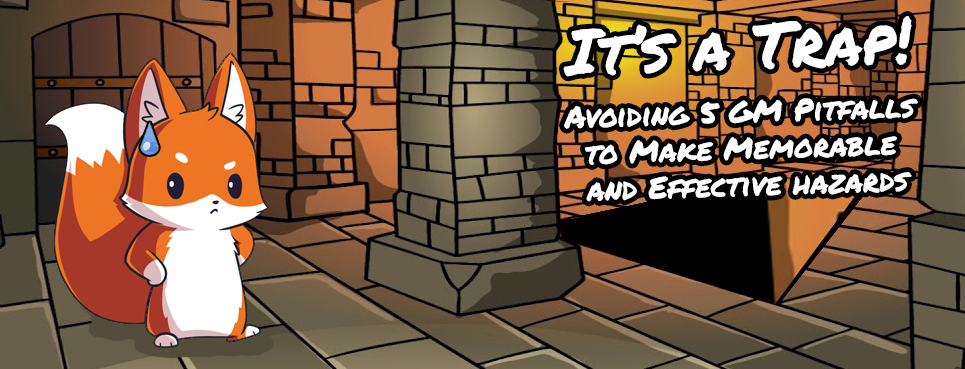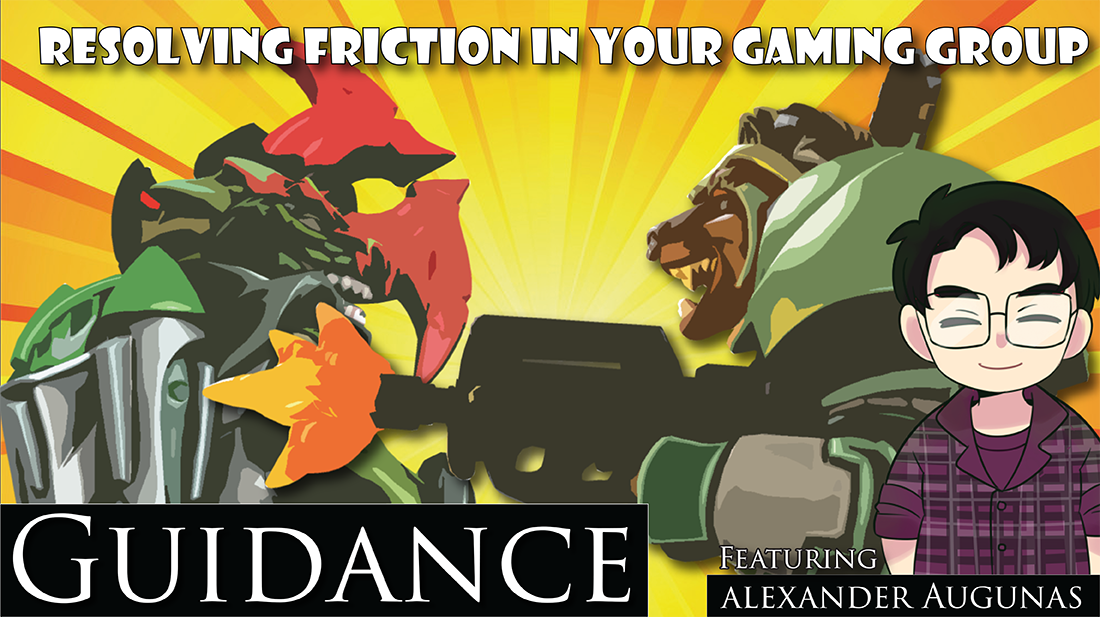Hazards have been around since the earliest iterations of the game. From A1 Slave Pits of Undercity to Abomination Vaults, they’ve been a constant source of paranoia and immersion for our dungeon-delving adventurers. And whether it’s a mechanical trap, a complex haunt, or even a dangerous skill challenge, knowing how to make, play, and adjust hazards has always been something of an overlooked art in adventure design. When they are used well, they add an engaging element to the game. But when they are used poorly? They can feel like a time-sink, equipment-check, or, worse yet, completely and utterly unfair. This is why I wanted to write a quick list of the 5 pitfalls I try to avoid as a GM when designing traps!
As usual, I’m going to link to the Hazard Creation Rules from the Dungeon Masters Guides and encourage everyone to check them out, because it makes creating hazards super fun and easy, even on the fly!
1.) Hazards are (Usually) not Single-Answer Puzzles
GM: “Your Trap Finder ability detects that the door ahead of you has a falling rock trap.”
Rogue: “I have an idea! Can I r-”
GM: “Roll a thievery check on the spring mechanism or attack it to try to break it.”
Players have their own ideas. You probably thought of how the players could defeat the trap in your adventure. And they probably thought of every possible solution except the three you expected. And that’s fine. Award the creativity with a circumstance bonus. Or even allowing a different skill check to be used instead. It will make your hazard that much more memorable, especially if something goes wrong and a nat-1 ruins their plans. You can even do a secret perception check to see if the character knows whether or not their plan worked and the trap is disabled!
2.) Hazards are (Usually) not just Timesinks
Fighter: “Just use Thievery to disable. I have two more rounds of haste!”
Paladin: “Yeah. Besides, if you fail, we can just spend ten minutes and I can heal you.”
If players have enough time to recover from the effects of a hazard, even if they rolled poorly and took the full brunt of the hazard, the hazard was a timesink. These should be avoided, especially if they are something like pits that players might spend thirty minutes drawing up engineering plans for a rope-bridge when their Athletics is high enough that they could have just climbed down one-side and up the other. Now there are reasons to put hazards like this in a dungeon. They can run the clock on buff and summon spells. They can be flavorful inclusions hinting at a dungeon’s true nature, such as traps intended to keep out weaker creatures. But random timesink traps will only serve to slow down the game! Doubly so if players feel like traps are just placed semi-randomly rather than coupled with a more interactive encounter; Do you really want your players checking every five-foot square for pressure plates?
3.) Hazards are (Usually) not Major Encounters
Rogue: “Fine! Oops, I rolled a 1 on my disable device.”
GM: “The scythe comes down for…wow, 88 damage.”
Rogue: “And with my Doomed condition, I guess I’m dead.”
Fighter: “…does the Trap reset?”
No one has a good time dying to a hazard*. Traps should supplement other encounters. And healing is abundant enough in Second Edition that, unless the trap is part of a more complex encounter with other monsters, the damage is rarely a relevant penalty unless it’s enough to kill you. So make sure the trap confers a condition the players can’t remove by just taking a 10-minute rest. Now you might notice that asterisk in the first sentence? That’s because complex hazards can be a completely different animal, functioning very much like monsters that can make up a major encounter. This is especially true for things like haunts or “larger-than-life” monster hazards. But setting out a pit-trap in the middle of a dungeon is either going to be forgettable (if the damage isn’t enough to kill someone) or unfun (if someone is honestly taken out by a hole in the ground).
4.) Hazards are (Usually) not Random
GM: “Raised from the dead, the rogue finally disables the trap and opens the door…”
Rogue: “Is it a treasure vault? A tome? Oh, can I have my rapier drawn in case we see-”
GM: “-fifteen foot corridor leading back to the room you guys already cleared.”
Hazards exist for a reason. They aren’t filler for an otherwise empty hall. A hazard’s design should speak to its function. Always keep in mind who designed the hazard, how it got to where it is, how the creature who built it uses it without hurting themselves, and what the intended function of the hazard is in your own encounter! A haunt is made far more memorable if the spirit’s deaths are relevant to the adventure, and not just an afterthought. That being said, they can serve as red-herrings in investigative scenarios. They can even serve as flavorful backdrops or comic relief, but you should always keep your specific gaming group in mind when designing your hazards. And even though I’ve used traditional traps as the example here, the rules in Second Edition are such that it’s super easy to design more complex and fantastical hazards that your players will have trouble even recognizing as such!
5.) Hazards are (Usually) not Worthless
Rogue: “…Does the Scythe at least have a rune on it?”
Hazards confer experience points. Players need gold as they level to maintain a certain level of power. There’s nothing wrong with the loot from a hazard being a prior adventurer, but it can greatly improve verisimilitude if the trap itself could be disassembled in some way, shape, or form to provide the reward for the treasure. Since traps are best used to supplement fights against monsters or complex hazards, hazards-as-treasure can even help give players adequate rewards against enemies who traditionally have little more than loin-clothes. Now even this rule can and should be subverted at times. There’s no reason an active cult should leave the valuables of would-be intruders lying around. Haunts usually don’t have corporeal gear to leave behind. And mechanical hazards can’t always be salvaged and a great deal of their cost is in installation.
In Summary…
All these “rules” are merely suggestions, and it’s up to every Game Master to learn what their players enjoy and what works for their table. Don’t write-off hazards because you’ve used them before. At the same time, don’t just throw in a random poisoned lock to a lone treasure chest because you realized last minute you didn’t put any hazards in the adventure. The best way to learn when and how to include a hazard is to get out there and play some games! I highly recommend checking out your local Pathfinder Society lodge online for some games, as there are some wonderful examples of flavorful, memorable, and impactful hazards that you can experience as a player or gamemaster. And some examples you might find don’t quite mesh with your group’s preferred style of adventuring, which is fine! Ultimately what makes our hobby great is learning how to make it your own, and I’d love to hear about the creative and successful hazards you’ve encountered over the years!






